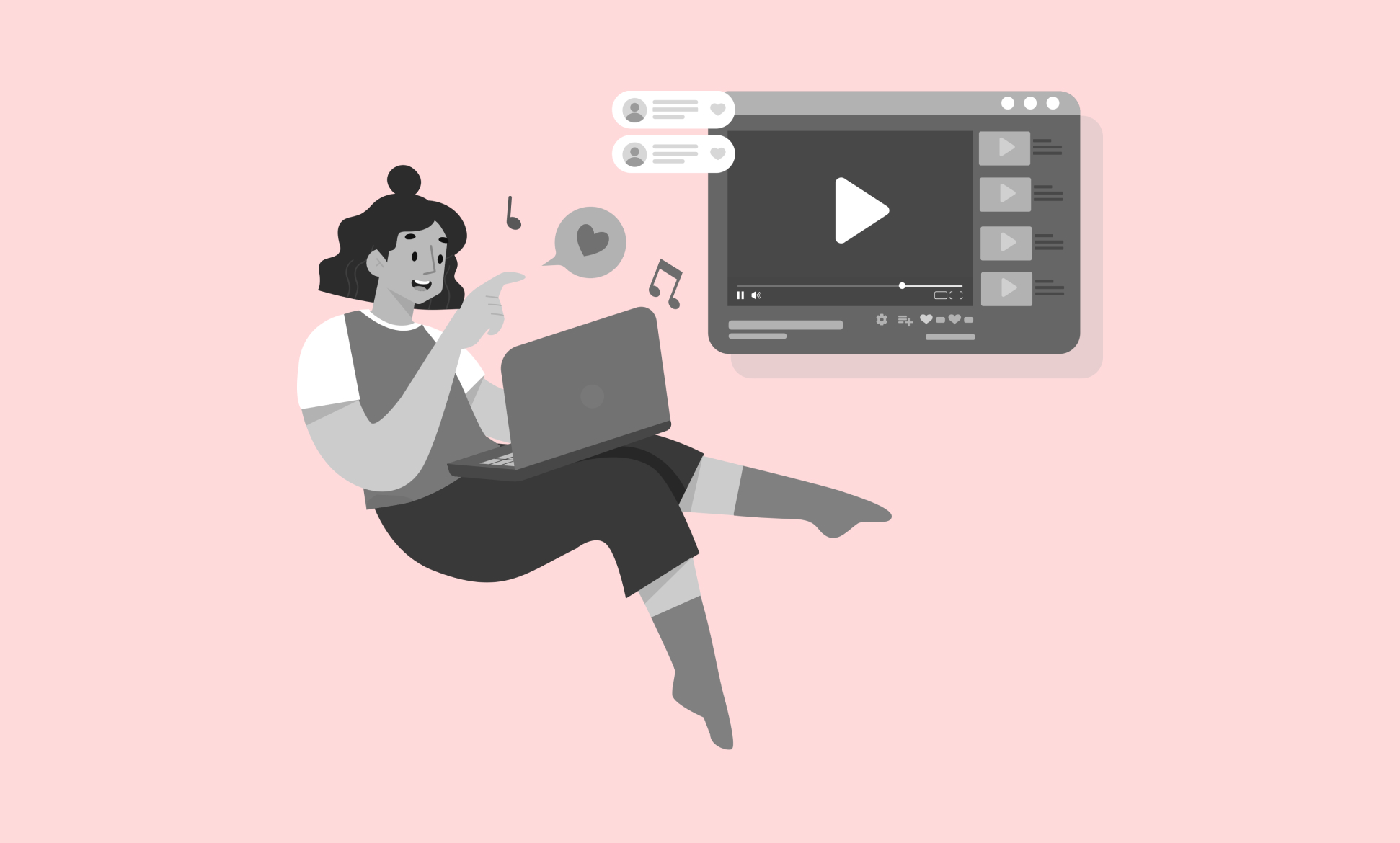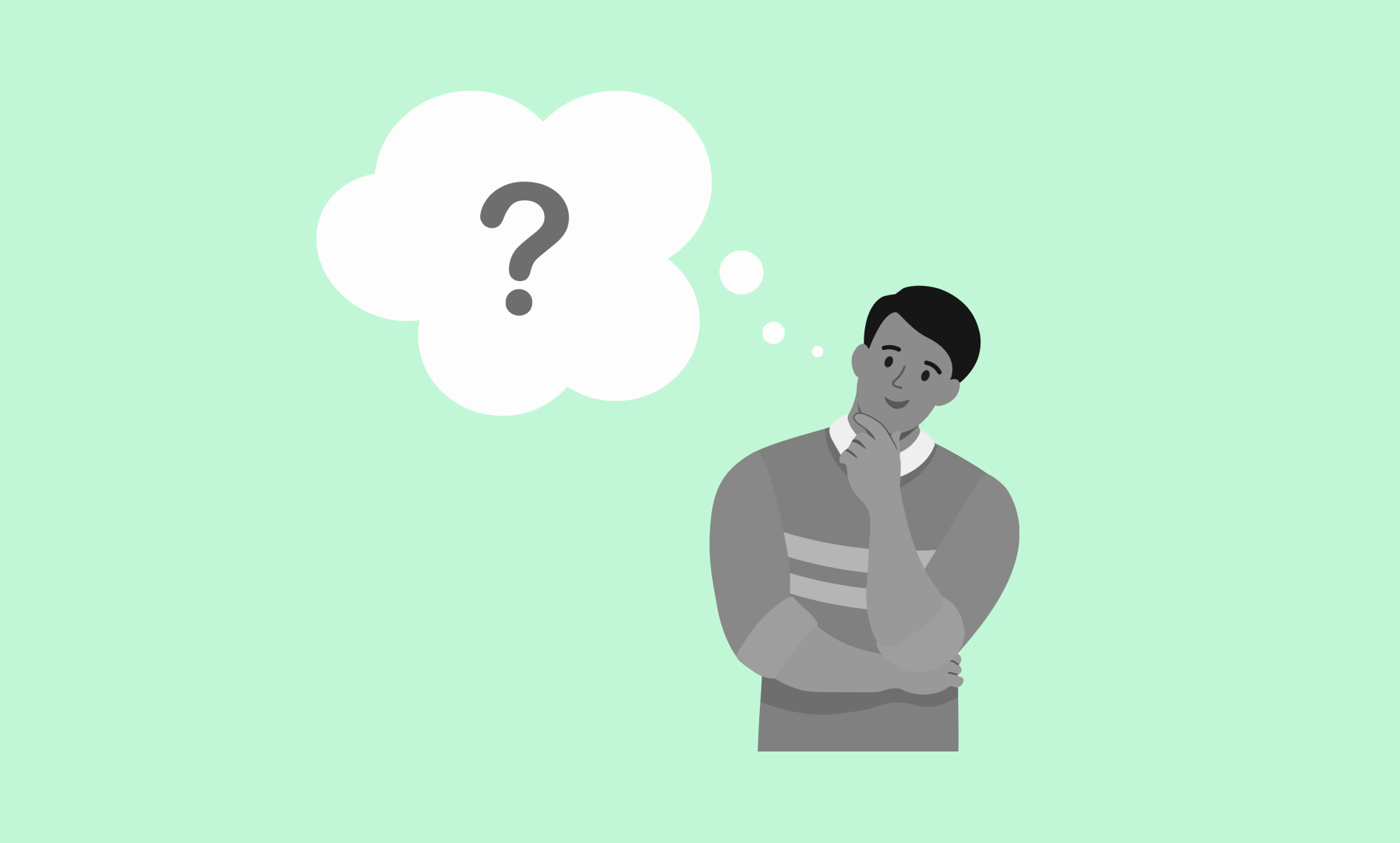A decade ago, if you wanted to build an audience, your options were pretty limited — maybe a blog, a newsletter, or, if you were really bold, a public access TV show (shoutout to Wayne’s World).
Fast forward to today, and the big question isn't if you should create content but where. And for most people, that decision comes down to two major platforms: YouTube and podcasts.
Both have large audiences, both can build your personal brand or business, and both require a serious time commitment. But they’re still very different channels.
Do you want to be on camera or behind a mic? Are you comfortable with fast-paced edits, or do you prefer deep, thoughtful conversations? Are you chasing viral potential, or are you prepared for a slow and steady pursuit of audience loyalty?
If you're stuck between the two, we’ll be breaking down:
- The pros of each strategy
- Combining the best of both mediums
- What you need to know about YouTube Podcasts
TL;DR: YouTube or podcasting for growing an audience
In a rush? Here’s the Cliff Notes:
- Content format: Podcasts are typically audio-only, ideal for on-the-go consumption; YouTube is video-based, engaging, but requires more time and attention.
- Audience engagement: Podcasts are great for deep, long-form content with loyal listeners; YouTube offers high visual appeal and better interactivity with comments, likes, and shares.
- Monetization: Both platforms offer a variety of monetization options, including ads, sponsorships, and affiliate marketing.
- SEO & Discoverability: YouTube is the world’s second-biggest search engine, providing loads of discoverability opportunities that traditional podcast apps lack.
- Audience growth: YouTube’s video content has more viral potential, leading to faster growth; podcasts are a longer-term play that require consistent, high-quality content to build a loyal audience.
- Consumption habits: Podcasts allow for multitasking and on-the-go consumption; YouTube requires viewers’ full attention for meaningful engagement.
- YouTube 🤝 Podcasting: We suggest launching a podcast on YouTube to combine the strengths of each medium. Podcasts provide deeper audience connection, while YouTube provides unbeatable reach and discoverability.
What podcasts are good for
If you’re interested in starting a podcast, here are a few of the main benefits of audio:
On-the-go consumption
Podcasts are a perfect fit for people with busy, on-the-go lifestyles. Unlike YouTube videos, which require your full attention, podcasts let listeners engage while doing other tasks — whether it’s driving, cooking, working out, or cleaning.
This makes them an easy way to stay informed, entertained, or inspired without having to commit to sitting down and staring at a screen. In fact, 71% of people turn to podcasts because they can multitask while listening.
In a similar vein, 79% of podcast listeners tune in via mobile devices. This flexibility is something YouTube videos just can’t match.
Deeper audience connection
Podcasts typically forge deeper connections with listeners than YouTube videos. The long-form nature of podcasts allows creators to dive into topics in more detail, offer personal insights, and develop a stronger sense of intimacy with their audience.
To put this in perspective, on average, podcast listeners spend about 42 minutes per episode. Compared to YouTube videos, which last about 7-15 minutes on average.
Plus, podcasts tend to be more casual and conversational, especially with long, unedited episodes (think Joe Rogan), which makes listeners feel like they’re part of a real-time conversation.
New audiences and increased reach
Podcasting offers creators an opportunity to reach new audiences that they might not be able to capture through YouTube. While YouTube is great for visual content, podcasts cater to people who prefer audio-only formats or need something they can listen to while multitasking.
Plus, the popularity of podcasts only continues to grow. In 2014, just 30% of Americans had listened to a podcast. Now, 64% of Americans tune in, with 42% listening every month. With this in mind, it’s clear that podcasts provide access to a broader audience who may not be as engaged with video content.
Lower barriers to entry
Creating a podcast can often be simpler and more cost-effective than producing YouTube videos. Video production typically requires good lighting, a camera, sound equipment, and advanced recording and editing software.
Of course, you can make your podcast process as high-tech and involved as you see fit. Many creators find success recording from home, without needing to get dolled up or purchase a fancy backdrop. This lowers the barrier to entry, making it easier for creators to get started and focus on content without worrying about the visual side of things.
Podcast ads > YouTube ads
If you’re looking to monetize your content, podcasts are the way to go. A study by Acast Advertising found that 84% of podcast listeners take action after hearing a podcast ad, with nearly 60% thinking more favorably about the brand and 44% making a purchase, compared to only 11% on YouTube.
In addition, host-read podcast ads are proven to capture more attention and foster stronger brand recognition, with 68% of listeners preferring them. This host-listener relationship makes audiences more likely to trust and act on the recommendations. This checks out, as 55% of podcast revenue comes from host-read ads.
What YouTube channels are good for
If you’re not completely sure if audio is right for you, here are some benefits unique to YouTube:
Discoverability
YouTube is the second-largest search engine in the world, just behind Google. This gives creators a major advantage when it comes to discoverability. With over 2 billion logged-in monthly users and more than 1 billion hours of YouTube videos watched daily, creators have access to a massive potential viewership, far greater than what traditional podcast listening apps can offer.
In contrast, podcast discoverability can be more challenging. Unfortunately, typical podcast platforms like Apple Podcasts and Spotify don’t offer the same level of search visibility as YouTube. We can see this in the numbers: only 18% of listeners use podcast directories to find new shows.
More audience-engagement features
YouTube has a robust suite of community engagement features. These tools allow creators to build stronger connections with their audience beyond just the content they produce. YouTube has several ways to foster direct interaction, including:
- Live streaming: Talk to your fans in real time, providing a sense of immediacy and intimacy.
- Super Chat and Super Stickers: During live streams, viewers can send paid messages and emojis, which not only provides a direct revenue stream for creators but also enhances viewer interaction.
- Community Tab: Allows creators to post updates, polls, and behind-the-scenes content, which keeps audiences engaged even when no new videos are uploaded.
- Comments, likes, and dislikes: YouTube's comment section provides an easy way for creators to interact with their audience and get feedback on their content. Creators can reply to comments, start conversations, and even pin comments they want to highlight.
This level of interaction is difficult to achieve within traditional podcast listening apps, which lack conversational and community-building tools. While Spotify has started to roll out comments and emoji reactions, most podcasters who want to interact with fans need to turn to social media or premium subscription platforms.
Tap into the visual
Video is inherently dynamic — whether it's through your facial expressions, body language, or the visuals you use to support your message. People connect differently with video content, and it’s not just about the story you tell; it's how you tell it.
Another big benefit is the ability to show things that words can’t always capture. Say you're doing a DIY project, an unboxing video, or sharing an art tutorial — visuals allow you to show exactly what you're talking about. This is where YouTube’s format shines: it's perfect for creators who want to visually demonstrate their ideas or skills visually.
Videos are more shareable
Videos have a higher tendency to be shared across social media platforms, websites and even embedded in emails. 92% of mobile video consumers share videos with others, which is significantly higher than any other content type, including audio-based content like podcasts.
YouTube Shorts further enhance shareability. These 60-second vertical videos have exploded in popularity, with over 6.5 billion daily views globally. They’re designed for quick consumption and easy sharing, making them perfect for viral moments. These Shorts can also be repurposed for social media platforms like TikTok and Instagram to optimize reach and discoverability.
YouTube Podcasts: The best of both
Now, I know what you’re probably thinking: “Isn’t there a way to leverage both mediums?”
Of course there is – and it’s just gotten easier with YouTube Podcasts. That’s right – YouTube isn’t just a video platform anymore. With the shutdown of Google Podcasts in early 2024, YouTube stepped in and has since taken the audio (and video) world by storm.
But don’t just take my word for it – a joint report from Signal Hill Insights and Cumulus Podcast Network found that YouTube is now the most-used platform for podcast consumption, sitting at 34%. It’s especially popular among podcast newcomers, seasoned listeners, and even the most dedicated fans who binge 6+ hours of content a week.
What’s keeping them there? It's not just the content—it's the experience. Listeners who discover podcasts on YouTube tend to stay because of the video, community features, comment sections, recommendations, and overall user interface. In fact, 64% of podcast listeners say YouTube offers a better experience than audio-only platforms, and nearly half (48%) say they discover new shows through YouTube.
That makes YouTube Podcasts an ideal solution for creators who can’t decide between the intimacy of audio and the reach of video. With one platform, you can get the best of both worlds — authentic long-form content, powerful discovery tools, and monetization options like ad revenue and sponsorships.
For a full how-to on leveraging YouTube Podcasts, you’ll want to check out our complete guide for creators on how to start a podcast on YouTube in 2025. It outlines the best practices, tips for optimizing your series for YouTube, and how to upload your first episode.
YouTube Podcast FAQs
Do you need a video podcast to post on YouTube Podcasts?
No, you can post audio-only shows to YouTube Podcasts using your cover art as the visual. Even if you go the audio-only route, we highly recommend uploading your show to YouTube to maximize your discoverability and reach. Plus, if you don’t want to be on camera but still want a visual, you can create custom illustrations like Darknet Diaries.
What is the difference between a YouTube podcast and a YouTube video?
A YouTube podcast refers to a playlist of videos that are organized as episodes of a show, while a YouTube video is a standalone video uploaded to the platform and can be part of a playlist or not.
Plus, there are a few content differences between the two. For instance, podcasts are generally longer, conversation-driven, and intended for more in-depth content consumption, while traditional YouTube videos are typically highly edited and focused on delivering more immediate, visually oriented information or entertainment.
Is YouTube Podcasting easy?
Compared to writing a social media post or a blog article, launching and maintaining a podcast is a big lift. Before diving in, it’s important to understand that:
Podcasting is a long-term play
Podcasting isn’t an overnight success — it’s a long-term investment. Podcasts take time to grow and rely on consistent, high-quality content to build an audience. According to Amplifi Media, 44% of podcasts never make it past three episodes, often because creators underestimate the time and effort required.
Audience growth takes patience. On average, podcasts with 5,000+ downloads per episode rank in the top 10% of shows, meaning most creators will need months to years to reach substantial listenership.
Podcasts take lots of time and effort
According to The Podcast Host, creators spend an average of 7 hours producing a single episode when factoring in research, scripting, recording, editing, and promotion. Plus, recent research from CoHost shows that resourcing is the top challenge for brands in podcasting (58%).
While audio-only shows have the benefit of being able to record anywhere, in your PJs, and at any time of day, there’s still loads of work that goes on behind the scenes that creators need to factor in and prepare for.
On the flip side, video podcasts have an added visual layer that you’ll need to consider. Unfortunately, setting up a camera and filming in front of a window isn’t going to cut it if you want to stand out. If you’re curious to learn more about what goes into making a video podcast that sounds and looks great, check out the complete guide.
Should I start a podcast or a YouTube channel?
At the end of the day, this isn’t really a YouTube vs. podcasting debate. It’s more of a “why not both?” scenario.
Podcasts are incredible for building trust, fostering deep engagement, and connecting with people in a personal, authentic way. YouTube, on the other hand, is unmatched in discoverability and community interaction.
If you’re serious about content creation and growing your brand or business, the smartest move is to stop thinking of these channels as separate. Repurpose your podcast for YouTube. Record your interviews on video. Use Shorts to tease episodes. Tap into the strengths of both platforms and build a flywheel that works harder for you.
If you want to keep up to date with all things podcasting, subscribe to our bi-weekly newsletter, Tuned In.




.webp)





